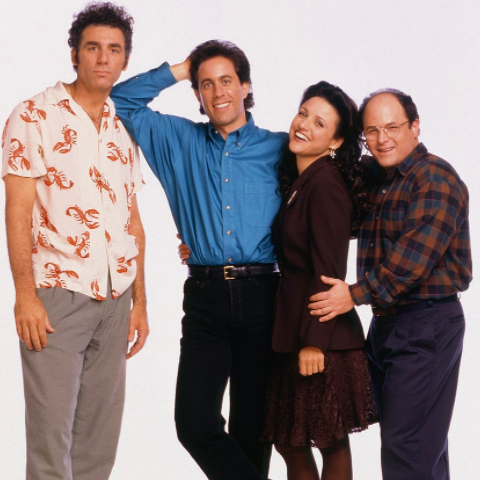In 1988, two burgeoning comedians named Jerry Seinfeld and Larry David teased the idea for a TV show based on nothing except their observations of life’s everyday quirks. Today, Seinfeld is the most successful TV show ever in syndication.
Seinfeld still runs on 90 percent of TV markets across the country and ranks among American adults’ top five favorite shows. It’s earned more than $3 billion (with a “b”) after its network run ended. And every weeknight, no fewer than one million people tune in to watch reruns.
Seinfeld’s success transcends entertainment. The show fuses elements of television and reality to the point where the boundary is indistinguishable, creating what Jennifer Keishin calls “Seinfeldia.” Whether they intended to or not, David and Seinfeld demonstrated what it takes to construct not only a show, but a brand that stands the test of time when everyone else is chasing today’s hottest trend.
Embrace Controversy
During its fourth season, Seinfeld’s writers decided to push the boundaries of taste on primetime network television. The goal: produce an episode about masturbation without using the term explicitly or showing any objectionable scenes. After several rounds of intense editing, the producers and NBC agreed to run “The Contest,” the infamous episode in which Jerry, George, Kramer and Elaine compete to see who can “hold out” the longest.
The episode sparked a mix of shock, thrill, and laughter. The media covered it incessantly. Nine advertisers even pulled their spots. But “The Contest” turned out to be one of the highest-rated episodes in the show’s history.
The lesson? Sometimes, you (brands) have to stir up the water in order to catch fish. Don’t fear controversy – fear obscurity.
Choose a Conversation and Own It
“It’s like that episode of Seinfeld when…”
That’s not an altogether uncommon phrase.
Seinfeld’s producers had a knack for noticing otherwise banal occurrences and converting them into dynamic talking points. George thinks it’s okay to pee in the shower because “it’s all pipes” and gets harassed for “double-dipping” his chip at a party. Jerry asserts that it’s unacceptable to “re-gift” something, even if you don’t like it.
Seth Godin explains that a successful marketer tells a story about what the audience notices. Larry David and Jerry Seinfeld didn’t pull plots out of thin air. They tapped into their audience’s mind and crafted stories that viewers could reference when they themselves encountered the same situations.
It’s 2018, and these pretzels are still making everyone thirsty.
Don’t Compete in an Existing Market – Create Your Own
Seinfeld broke the rules of 90s television. Larry David made his show’s unofficial motto “No hugging, no learning.” It captures the difference between Seinfeld and other sitcoms in which the characters “grow” as a result of marriage, parenthood, new careers or other dramatic midlife passages (cough, cough: Friends). Seinfeld is the anti-sitcom. The music is bizarre. Nobody cries. It is, quite frankly, a show about nothing, which paradoxically makes it about everything.
You don’t create something special by thinking like everyone else. Tapping into uncharted waters is indeed a marketing decision, and it’s arguably the best one you can make.
In his book Perennial Seller, Ryan Holiday notes that “Seinfeld has transcended the era it was produced in primarily because, like many classics, it focused on what was timeless about timely events.” In a media culture that’s defined by whatever the next big thing is, Seinfeld reminds brands that lasting success often stems from principles that are much older than the media through which they communicate.



